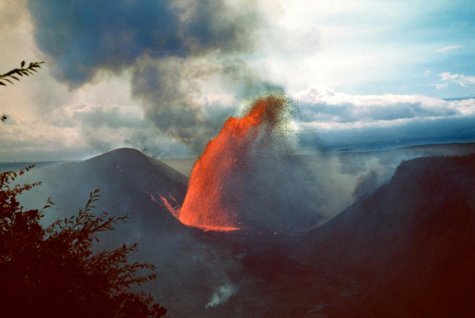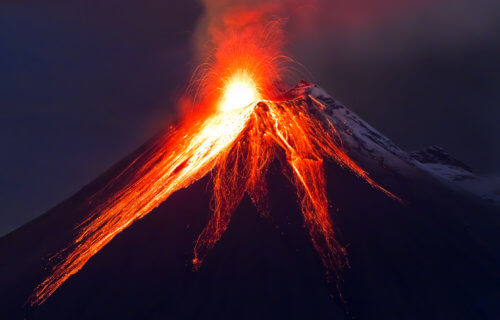STANFORD, Calif. — Volcanoes have long been a great source of mystique for scientists. In particular, figuring out how to detect an imminent eruption sooner to avoid deadly outcomes, such as the New Zealand eruption in 2019, is a top priority. Now, volcanologists say they have discovered the “holy grail” of volcano research after finding a way to predict eruptions by looking at decades-old lava crystals.

A new study of dried-up lava reveals that crystal formations can tell scientists about magma flows underground and give hints about when they might next blow. The astounding discovery at Kilauea Iki, a pit crater next to the main summit caldera of the Kilauea Volcano in Hawaii, came after examining deposits of olivine, a green mineral brought up from beneath the earth’s surface, during eruptions.
Despite being leftover from an eruption of Kilauea Iki as far back as 1959, an analysis of the millimeter-sized crystals revealed they were oriented in an odd, but surprisingly consistent pattern. The crystals form when the magma, which is called lava once it reaches the surface, comes into contact with cool air, which causes it to solidify rapidly and trap the crystals as they were at the moment of eruption.
Scientists from Stanford University in California realized the patterns in the crystals were created by a wave in the magma below the surface moving in two directions at once. They say one flow moved directly on top of the other, rather than pouring through the hollow column at the center of the volcano, known as the conduit, in one steady stream.
Simulations of the Kilauea Volcano helped scientists understand eruptions
With this new knowledge, and computer simulations, the team now think they can predict future eruptions based on flow patterns and even uncover information about volcanic activity from the past.
“I always had the suspicion that these crystals are way more interesting and important than we give them credit for,” says Jenny Suckale, an assistant professor of geophysics at Stanford’s School of Earth, Energy & Environmental Sciences, in a university release. “We can actually infer quantitative attributes of the flow prior to eruption from this crystal data and learn about the processes that led to the eruption without drilling into the volcano. That to me is the Holy Grail in volcanology.”
For scientists, studying the active volcano at Kilauea poses a daunting challenge due to its unpredictable eruptions. Residents on the southeast side of the Big Island of Hawaii face great risks from the volcano’s periodic bursts of lava flow. The study could lead to great progress in keeping those residents safer in the future.
“This is the result of the detective work of appreciating the detail as the most important piece of evidence. This data is important for advancing our future research about these hazards because if I can measure the wave, I can constrain the magma flow – and these crystals allow me to get at that wave,” says Suckale. “No one knows when the next episode is going to start or how bad it’s going to be – and that all hinges on the details of the conduit dynamics.”
The findings have been published in the journal Science Advances.
SWNS writer William Janes contributed to this report.
